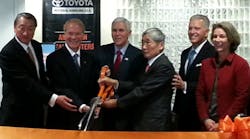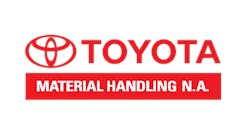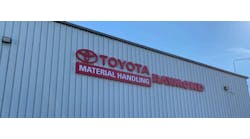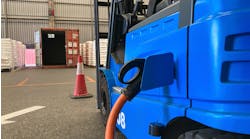According to the Occupational Safety and Health Administration (OSHA), forklifts are involved in approximately 34,900 serious injuries a year. This doesn’t have to be, says Jay Bruscato, vice president of first aid & safety for Cintas Corporation, providers of first-aid and personal protective equipment (PPE).
“With the proper precautions and operator training, forklifts are safe, efficient and necessary machines,” he said. “While general forklift operation might be part of a safety program, safety managers must regularly communicate with operators so that they can understand the hazards associated with the equipment and eliminate unsafe practices from the workplace.”
Bruscato identifies six areas ripe for improvement in forklift fleet management:
1. Forklift maintenance personnel handling lead-acid and nickel-iron rechargeable batteries should shield themselves from corrosive chemicals by wearing gloves, aprons, and face and eye protection. Employees should also know how to properly clean up chemical spills.
2. OSHA requires businesses with battery-operated forklifts to install eyewash stations and showers. This helps minimize the effects of injuries caused by battery acid splashes or dust and flying debris.
3. To ensure employees don’t strain themselves while handling 2,000-lb. batteries, a battery cart should be used when recharging batteries. Protective footwear should also be worn.
4. OSHA requires that each operator complete formal training that includes classroom instruction, trainer demonstrations, exercises and practical evaluation of individual operator performance. Utilizing instructor-led training, DVD programs and online courses offers a balanced approach to teaching employees. Organizations should also reinforce training with safety floor signs and wall posters.
5. Given the frequency of forklift accidents, workers should understand what steps to take in the event of an accident, such as how to call emergency personnel for help. Organizations can teach employees emergency response during training sessions.
6. Forklift batteries can emit toxic gases while charging. Organizations should use fume hoods or exhaust fans to keep emissions from reaching volatile levels.



